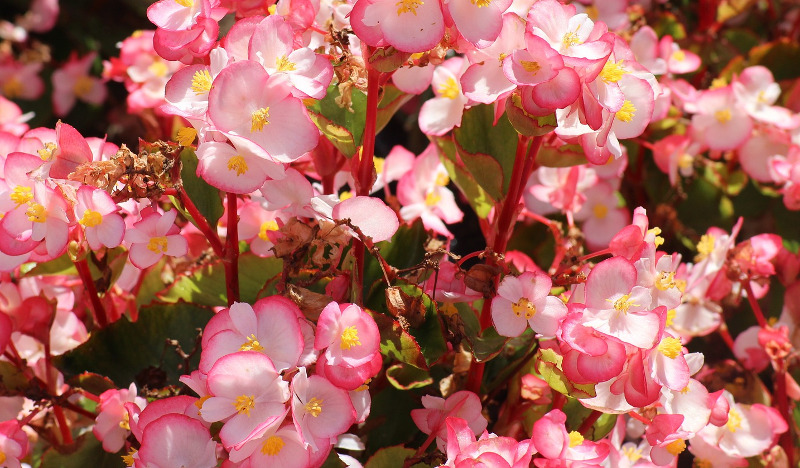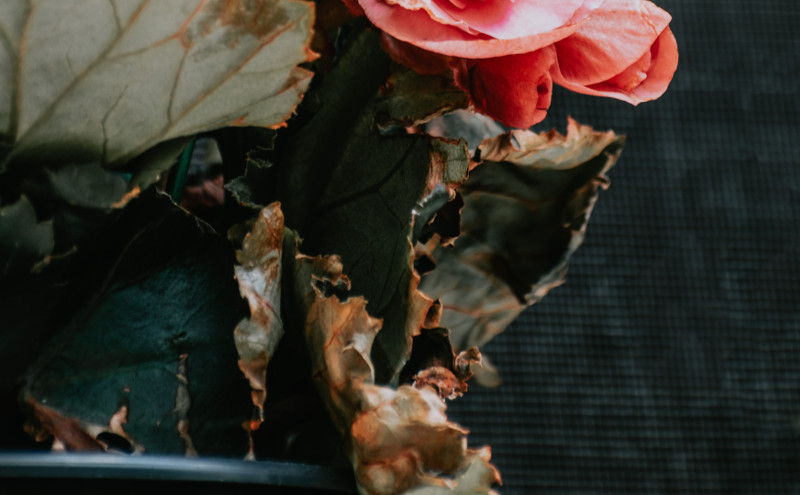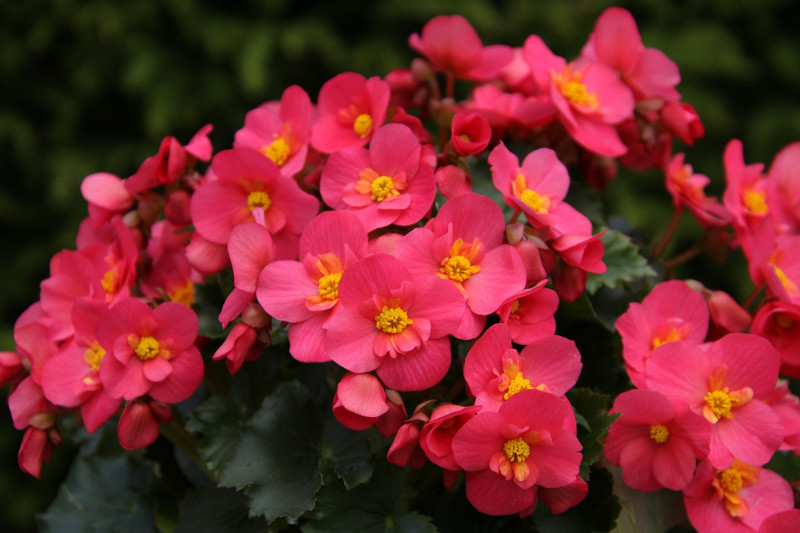Pruning and deadheading begonia is recommended to promote a bushier plant with more flowers. Also, prune if your plant becomes leggy. This will help the plant have healthier looking growth and helps encourage the plants to put energy towards producing more flowers.

When to Prune Begonias
Cut back the growing tips on begonias branches every 2 to 4 weeks or if your plants become leggy. The plant will produce new branches from the pinched point. Additional stems provide more opportunities for the begonia to create flowers.
Tuberous begonias die back every year. The tubers can be dug up and stored for replanting the following year. Begonias that grow from rhizomes retain their foliage all year long and can be moved indoors as houseplants during the colder months.
Deadhead regularly to keep your plant looking neat and to prevent the chance of rotting flowers from attracting disease.

How to Prune Begonias
Step 1 - Inspect the Begonia
Look for stems that have become leggy or are in areas that you would like to be bushier.
Step 2 -Begin Pruning
Use your thumb and finger to pinch off the growing tips on begonias stems. The stems easily break making pruners unnecessary.
Step 3 - Deadhead
Remove all dead and faded flowers daily or as needed.

Why Do You Prune Begonias?
Cut back begonias to keep them looking tidy and covered with blossoms. Removing dead flowers reduces the chance of infection from diseases if the fallen flowers remain on the ground or the container soil surface.
Cutting back leggy growth on overgrown begonia stems rejuvenates the plant into producing new healthy growth.
Begonia Pruning Tips
- Remove dead flowers.
- Prune sparse areas to promote thicker growth.
- Be careful when pruning to avoid accidentally breaking adjacent stems.
- Use your fingers to prune stems and faded flowers.
 |
Author Janice Cox - Published 12-09-2021 |
